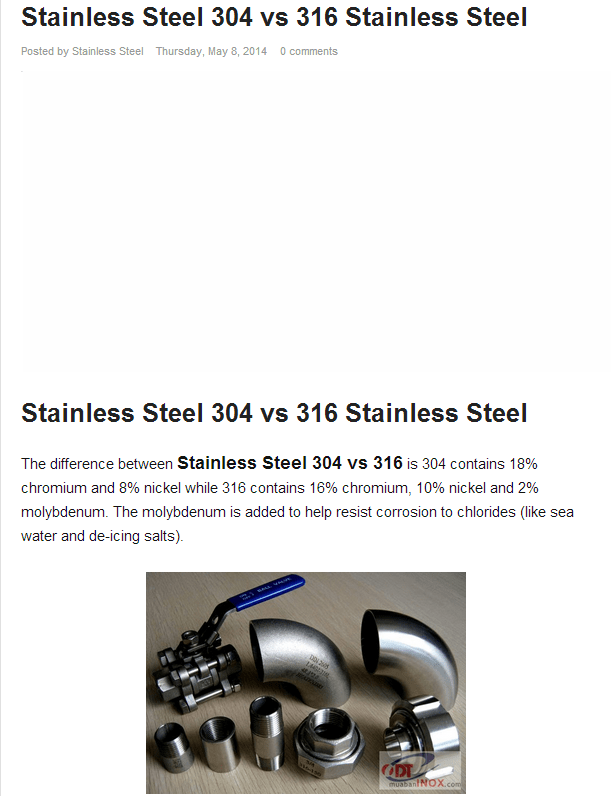

- #18 8 STAINLESS STEEL VS 316 FULL#
- #18 8 STAINLESS STEEL VS 316 ISO#
- #18 8 STAINLESS STEEL VS 316 SERIES#
Stainless steel fasteners can be made to different grades which relate to properties such as corrosion resistance and also different strength classes. It has a nominal composition of 18 chromium and 8 nickel. Let’s find out the major differences between these two grades 304 vs 316 stainless steel.Tensile Strength is the maximum tension applied as loading that a fastener can support prior to (or coincidental with) its fracture. Type 304 (frequently referred to as 18-8 stainless) is the most widely used alloy of the austenitic group. What are the differences between 304 and 316 stainless steel?įrom the above discussion, we know about the 304 and 316-grade stainless steels. Marine environments, especially those with chlorides present.Food and Beverage processing facilities with extreme environments.Heavy industrial, Chemical processing and storage equipment. The following table lists the chemical composition of stainless steel alloys, including austenitic SS 304, 304L 316, 316L, 321, 303, 302, 301, 904L, 201, etc.Common applications of 316 grade stainless are:
#18 8 STAINLESS STEEL VS 316 FULL#
Sponsored Links For full table - rotate the screen USA Russia Sweden European Union W.N.
#18 8 STAINLESS STEEL VS 316 SERIES#
So its degree of corrosion resistance is higher than the 18-8 series stainless steels. So, 316 grades of stainless steel provide added corrosion resistance as compared to 304 grades. Comparing international stainless steel standards from America (US), France, Germany, Italy, Japan, Russia, Spain, Sweden, England (UK) and the European Union. The 316 stainless steel has 2-3 molybdenum added. 18/8 stainless is superior to the 410 stainless in corrosion resistance but not as corrosion resistant in saltwater as type 316. they also contain 2 to 3% molybdenum which increases the corrosion resistance further.

They have 81 of their average alloy composition in common. Kitchen equipment and appliances like diswasher, refrigerators, etc Both AISI 316 stainless steel and AISI 410 stainless steel are iron alloys.The presence of high amounts of chromium and nickel provides excellent corrosion resistance and because of this 304 stainless steel is widely used in Manganese, silicon, and carbon are the other major allowing elements with the base metal as iron. What is 304 stainless steel?ģ04 grade of stainless steel is an austenitic grade of stainless steel alloy consisting of 18 to 20% chromium and 8 to 10.5% nickel. In the following section, we will find out the differences between 304 and 316 grades of stainless steel. At a quick glance, both 304 and 316 stainless steel grades may seem to be similar as there are many similarities in properties of both 304 and 316 grades. In technical datasets, stainless steel is sometimes designated as inox (inoxidizable), CRES (corrosion-resistant), or SS or SST (stainless steel). Type 304the most common grade the classic 18/8 (18 chromium, 8 nickel) stainless steel.
#18 8 STAINLESS STEEL VS 316 ISO#
As per ISO 3506, 316 grade is popular as A4. According to use, the 316-grade stainless steel comes into the second position. It accounts for more than 50% of all stainless steel produced in this world. Also popular as A2 by the International Organization for Standardization ISO 3506 304-grade stainless steel is the most widely used SS grade. Both 304 and 316 stainless steels are austenitic grade stainless steels having very good corrosion resistance.


 0 kommentar(er)
0 kommentar(er)
